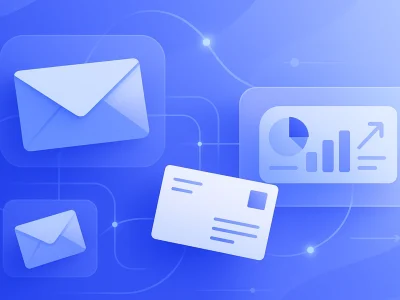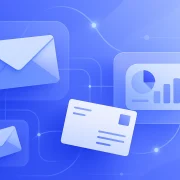44% of companies lose over 10% of annual revenue due to poor-quality CRM data.
This shows how many CRM users’ trust in their data is unfounded.
Bad CRM data – whether it’s due to missing, incorrect, incomplete, or outdated information – can lead to missed opportunities, incorrect sales forecasts, and ineffective marketing efforts. To avoid these pitfalls, businesses must enrich their internal data with external, up-to-date sources. Data enrichment ensures that your CRM is not just a repository of information but a powerful tool for driving smarter decisions and building better customer relationships. It transforms scattered, disconnected data points into complete, cohesive, actionable customer profiles.
What is Data Enrichment?
Data enrichment is the practice of enhancing existing CRM data by adding new and relevant information from external sources. The goal is to fill in gaps in customer data and make it more detailed and valuable. With enriched data, companies can get a clearer understanding of their customers and make smarter decisions.
For example, consider a basic customer record that includes only a name, phone number, and address. While this information can be useful, it doesn’t give enough insight into the customer’s job, buying preferences, or income. By adding additional data such as the customer’s profession, company, and salary, the CRM record becomes much more useful for marketing and sales teams.
Basic CRM Data:
- First Name: Randy
- Last Name: Hanscom
- Phone: 231-821-8063
- Email: rh@groupbuff.com
- Address: 4085 Bee Street, Holton MI
Enriched CRM Data:
- First Name: Randy
- Last Name: Hanscom
- Phone: 231-821-8063
- Email: rh@groupbuff.com
- Address: 4085 Bee Street, Holton MI
- Profession: Marketing Manager
- Company: Group Buff
- Salary (avg.): $4000
With this enriched data, companies can better target their marketing campaigns and personalize customer interactions. The more data you have, the more you can understand and engage with your customers.
Why is Data Enrichment Important?
Data enrichment helps businesses get a deeper, more accurate understanding of their customers. Here are some key reasons why data enrichment is so valuable:
- Improved Customer Targeting: Enriching your CRM with detailed demographic and firmographic data helps you target customers based on their job roles, income levels, interests, and more. This leads to more personalized communication and better results from your campaigns.
- Better Customer Relationships: Having richer customer profiles allows businesses to create more relevant interactions, building stronger relationships with their customers.
- Smarter Decision-Making: Data enrichment helps businesses make informed decisions by providing a more complete picture of each customer. This can improve sales forecasts, lead prioritization, and marketing strategies.
- Increased Sales: With better-targeted campaigns, businesses can boost conversion rates and generate more revenue from existing customers and prospects.
Challenges of Data Enrichment
While the benefits of data enrichment are clear, it’s not always a straightforward process. There are several challenges that businesses may encounter along the way:
- Fragmented Data: Customer data may be scattered across different systems or departments, leading to incomplete or inconsistent records. Integrating this data into a single CRM system can be a major hurdle.
- Poor Data Quality: Adding external data without first cleaning up internal data can lead to more problems. If your CRM is filled with duplicates or outdated information, enriching it won’t provide accurate results.
- Compliance and Privacy Concerns: As companies enrich their data with external sources, they must be mindful of privacy laws and regulations. It’s essential to ensure that any third-party data is obtained and used in compliance with legal requirements.
- Costs and Resources: Data enrichment can be resource-intensive, especially for larger organizations. The process may require significant investment in technology, time, and skilled professionals.
- Using Enriched Data Effectively: Even with enriched data, businesses may struggle to analyze it and derive meaningful insights. This requires strong data analytics capabilities and seamless integration with the company’s CRM system.
How is Data Enriched?
There are two main ways to enrich CRM data:
- Building on Existing Data: This involves cleaning up, merging, and updating the internal data to ensure it’s accurate and useful. It includes processes like:
- Integration: Combining data from different systems into one unified source.
- Cleaning: Fixing errors and removing outdated or irrelevant information.
- Deduplication: Eliminating duplicate records to improve data accuracy.
- Merge and Purge: Consolidating data from multiple sources and removing unnecessary fields.
By cleaning and consolidating existing data, businesses can create a “Golden Record” — a single, accurate profile for each customer.
- Using External Data: External data sources can provide additional insights that internal data alone might not cover. Third-party data might include:
- Firmographics: Information about a company, such as industry, size, and job roles.
- Demographics: Data like age, marital status, and income levels.
- Technographics: Information about a customer’s technology preferences and usage patterns.
External data can be gathered from public sources, such as social media, websites, and online directories. However, it’s important to ensure this external data is clean and validated before adding it to your CRM.
The Data Enrichment Workflow
To get the most out of your data enrichment efforts, follow these steps:
- Set Clear Goals: Establish what you want to achieve with data enrichment. Whether you’re aiming to improve customer targeting, personalize your marketing efforts, or enhance customer service, having a clear goal will guide the process.
- Prepare Your Data: Before enriching your data, clean and deduplicate it to ensure you’re starting with accurate, high-quality records. Use tools like data matching and data cleansing software to get your data in top shape.
- Enrich and Merge Data: Use external data sources to fill in any gaps in your customer profiles. After adding this data, merge it with your existing CRM records to create a more complete picture.
- Maintain Data Quality: Data enrichment isn’t a one-time task. To ensure your CRM stays accurate and up-to-date, implement a regular data cleaning and updating schedule. This will keep your data fresh and help you avoid the risk of it becoming outdated.
- Leverage Data Insights: Once your data is enriched and cleaned, use it to gain deeper insights and drive more informed decisions. Use this enriched data to improve customer experiences, sales strategies, and marketing campaigns.
The Importance of Data Quality
For data enrichment to be successful, it’s essential to address any data quality issues first. Poor data quality can undermine your efforts and lead to inaccurate insights. Here are some common data quality issues to watch out for:
- Invalid Values: Data values that don’t meet predefined criteria.
- Inconsistent Formats: Data that doesn’t follow a consistent structure, such as phone numbers or dates.
- Outdated Information: Customer data that’s no longer accurate due to life changes or other factors.
By prioritizing data quality before enrichment, businesses can ensure that they’re enriching accurate, reliable information. This will help maximize the value of enriched data and make it more effective for driving business outcomes.
Conclusion
Data enrichment can transform your CRM into a powerful tool for driving smarter decisions and building better customer relationships. However, it’s important to keep in mind that data enrichment is an ongoing process. Regularly updating and maintaining your data is crucial to ensure its accuracy and usefulness. By combining enriched data with good data quality practices, businesses can unlock valuable insights, improve customer experiences, and achieve greater success in their marketing, sales, and customer service efforts.











Comments